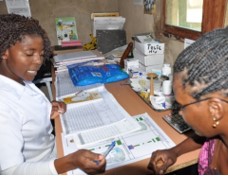Speeches Shim
COMMUNITY-BASED HIV SERVICES FOR THE SOUTHERN REGION ![]() (pdf - 125k)
(pdf - 125k)
BACKGROUND
The prevalence of HIV in Mozambique is 12% among adults 15 to 49 years old with substantial variation in regional prevalence rates ranging from 25% to 3.7%. Mozambique’s HIV epidemic is driven by a complex combination of structural and social and behavioral factors that vary among sub-populations, including: low literacy rates (59%); poverty; low levels of male circumcision; insufficient access to HIV prevention, care, and treatment services; sexually transmitted infections; sexual violence; transactional sex; multiple concurrent partners; cultural practices, such as rites of passage; and gender imbalances. Despite gains made in scaling up access to Anti-Retroviral Treatment (ART), Mozambique has not yet achieved epidemic control. Although ART is now being provided in every district, national coverage has reached only 74% for adults and 46% for children as of 2014.
PROGRAM DESCRIPTION
The program seeks to increase access and application of high-impact interventions that support and facilitate voluntary stigma-free uptake of HIV testing services, early enrolment and initiation of ART, adherence to anti-retroviral medications (ARVs), and retention in care and treatment. These services are made available via evidence-based approaches that strengthen lessons from other community-based HIV services partner interventions. The implementing partner supports and contributes towards IR1: Expanded evidence for community based interventions and strategically strengthened community information systems; IR2: An enabling environment for increased uptake of HIV testing services and improve utilization of quality (assured) community based HIV services; IR3: Facilitated enrolment into care and early ART initiation for diagnosed PLHIV; IR4: Strengthened support for treatment adherence and retention in care towards achieving viral suppression.
EXPECTED RESULTS
As a result, the project will contribute to a reduction in new HIV infections, AIDS-related morbidity and mortality. The implementing partner hypothesizes that if PLHIV have community support and access to high-quality and well-coordinated HIV prevention, care and treatment based on their needs through case management and effective referrals and linkages, then they will be empowered to adopt positive behaviors, become more resilient, provide nurturing environments for their peers and families and ultimately become advocates to positively influence others to begin ART immediately after an


Comment
Make a general inquiry or suggest an improvement.